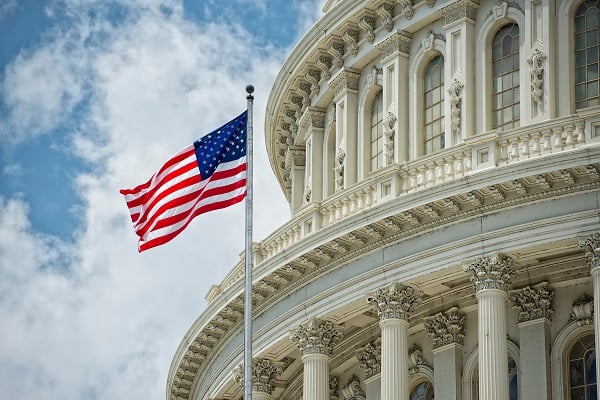Department of the Interior Accelerates Permitting for Oil and Gas, Adopts 28-Day Mandate
In response to the Trump administration’s push to increase U.S. energy output by declaring a national energy emergency, the Department of the Interior (the Interior) has released plans to aid the administration’s goals. These include the Interior’s Emergency Permitting Procedures intended to accelerate and streamline review and approval of certain energy projects, primarily oil and gas. Bypassing formal rulemaking, the Interior cites its authority during emergencies to implement “alternative processes” to comply with the National Environmental Policy Act (NEPA), the National Historic Preservation Act (NHPA), and the Endangered Species Act (ESA). The alternative processes are available to current and future applicants so long as they affirm in writing to the Interior that they qualify for and want to avail themselves of the expedited processes.
Fish and Wildlife Revives Incidental Take Saga Under the Migratory Bird Treaty Act
In latest saga surrounding the formidable Migratory Bird Treaty Act (MBTA or Act), the U.S. Fish and Wildlife Service on April 21, 2025, withdrew its 2021 advance notice of proposed rulemaking to potentially authorize the incidental taking or killing of migratory birds, consistent with its interpretation of the Act. The 2021 advance notice promised a new regulatory scheme possibly authorizing the incidental take of migratory birds — a practice that would have broken with pre-2017 MBTA interpretation but more practically implement the Act in response to various needs, such as infrastructure permitting and development.

Three Takeaways from the Trump Administration’s Latest Push for Shifts in Domestic Energy Production
On April 8, 2025, President Trump issued three executive orders reflecting the Administration’s push for increased domestic coal production. The orders point to the surge in electricity demand from data centers and other infrastructure required to support Trump Administration goals, including becoming a leader in artificial intelligence (AI), as a key rationale. Here are three takeaways from these orders.
SEC Ends Defense of Climate-Related Disclosure Rules
On March 27, 2025, the U.S. Securities and Exchange Commission (SEC) announced that it had voted to end its defense of the final rules on the enhancement and standardization of climate-related disclosures for investors (the climate rules). This decision follows significant opposition to the climate rules from congressional leaders, trade associations, state attorneys general, and other business entities. (more…)
The Future of Environmental Review of Federal Permitting Remains Unsteady as White House Seeks to Rescind NEPA Regulations
On February 19, 2025, the Council on Environmental Quality (CEQ) submitted a proposed Interim Final Rule rescinding its regulations implementing the National Environmental Policy Act (NEPA). The Rule will become effective 45 days after its publication in the Federal Register, marking the end of nearly 50 years of CEQ regulations serving as the foundation for federal environmental reviews. This Interim Rule comes right at the deadline set by President Trump’s Executive Order (EO) 14154—Unleashing American Energy—which rescinded CEQ’s authority to issue NEPA regulations and revoked President Carter’s EO 11991, which had originally directed CEQ to promulgate implementing regulations.

Top 5 Energy Actions You Should Know from President Trump’s First Day
On January 20, 2025, President Trump began his second term with the signing of 26 executive orders (EOs), which included the recission of almost 80 EOs of the previous administration. Trump’s orders contain both repeals of key Biden Administration policies and calls to agency action to reassess treatment of major energy issues associated with domestic energy production. Here are the top five actions to know from President Trump’s first day as the new administration begins its reshaping of U.S. energy policy for his second term in office.
Top 5 Environmental Actions You Should Know from President Trump’s First Day
On January 20, 2025, President Trump began his second term with the signing of 26 executive orders (EOs), which included the recission of almost 80 EOs of the previous administration. Trump’s orders contain both repeals of key Biden Administration policies and calls to agency action to reassess treatment of major environmental issues associated with motor vehicles, energy development, and climate change. Here are the top five actions to know from President Trump’s first day as the new administration begins its reshaping of U.S. environmental policy for his second term in office.

EPA Publishes First-Of-Its-Kind Framework for Considering Cumulative Impacts Across Agency Actions
On November 21, 2024, the U.S. Environmental Protection Agency (EPA) published Notice of a newly developed draft framework intended to provide all EPA programs with a shared reference point for determining when and how to analyze or consider cumulative impacts—defined broadly to include the totality of exposures to combinations of environmental stressors and their effects on health and quality-of-life outcomes. Keeping pace with the Biden administration EPA’s environmental justice drive, key goals of the Interim Framework for Advancing Consideration of Cumulative Impacts include empowering EPA to (1) more fully and accurately characterize the realities communities face, (2) pinpoint the levers of decision making and identify opportunities for interventions that improve health and quality of life while advancing equity, and (3) increase meaningful engagement, improve transparency, and center actions on improving health and environmental conditions in communities.
Vermont and New York Climate Acts are First in a Wave of Likely Climate Change Cost Recovery Laws
On May 30, 2024, Vermont’s Republican governor, Phil Scott, allowed Vermont’s S 259 — also referred to as the “Climate Superfund Act” — to become law without his signature. The stated goal of this law is to mitigate the impacts of climate change.
SEC Finalizes Climate-Related Disclosure Rules Ushering in a New Era of Public Company Climate Reporting
On March 6, 2024, the U.S. Securities and Exchange Commission (SEC) adopted final rules that will require domestic and foreign registrants to include extensive climate-related information in their registration statements and periodic reports.


